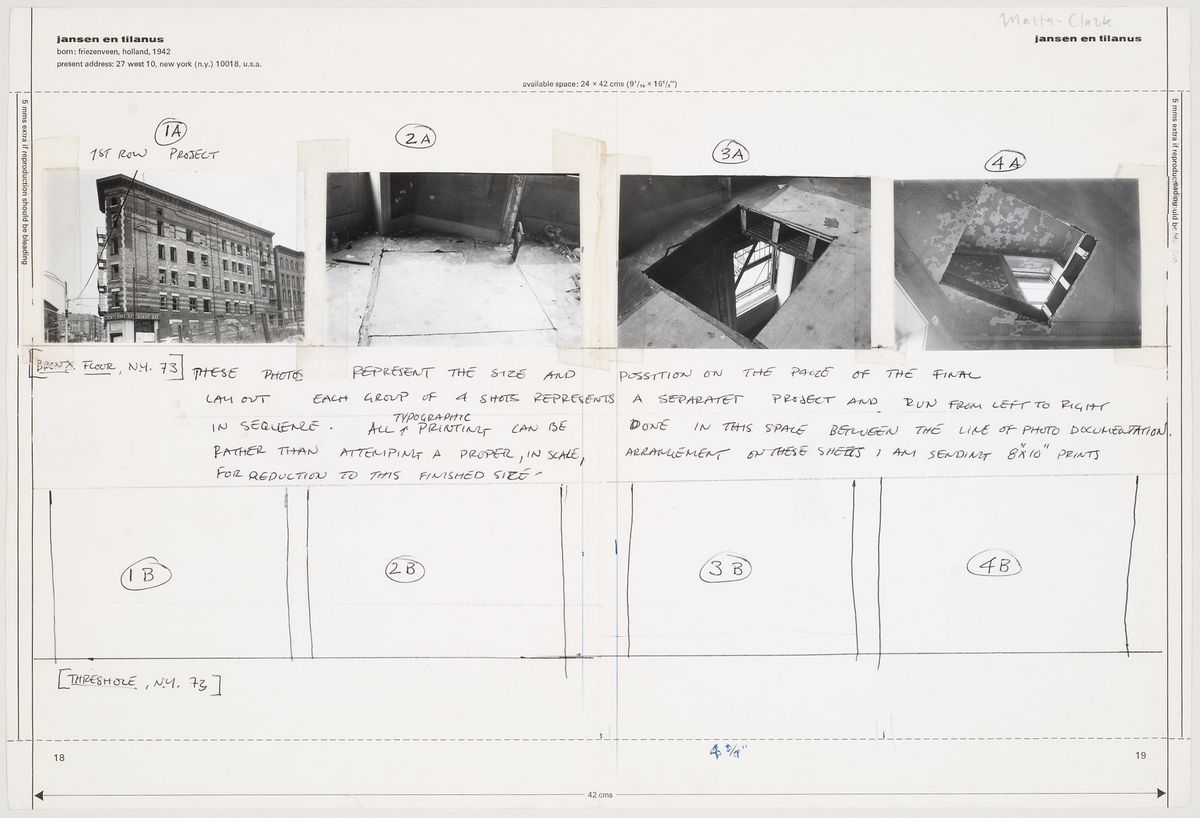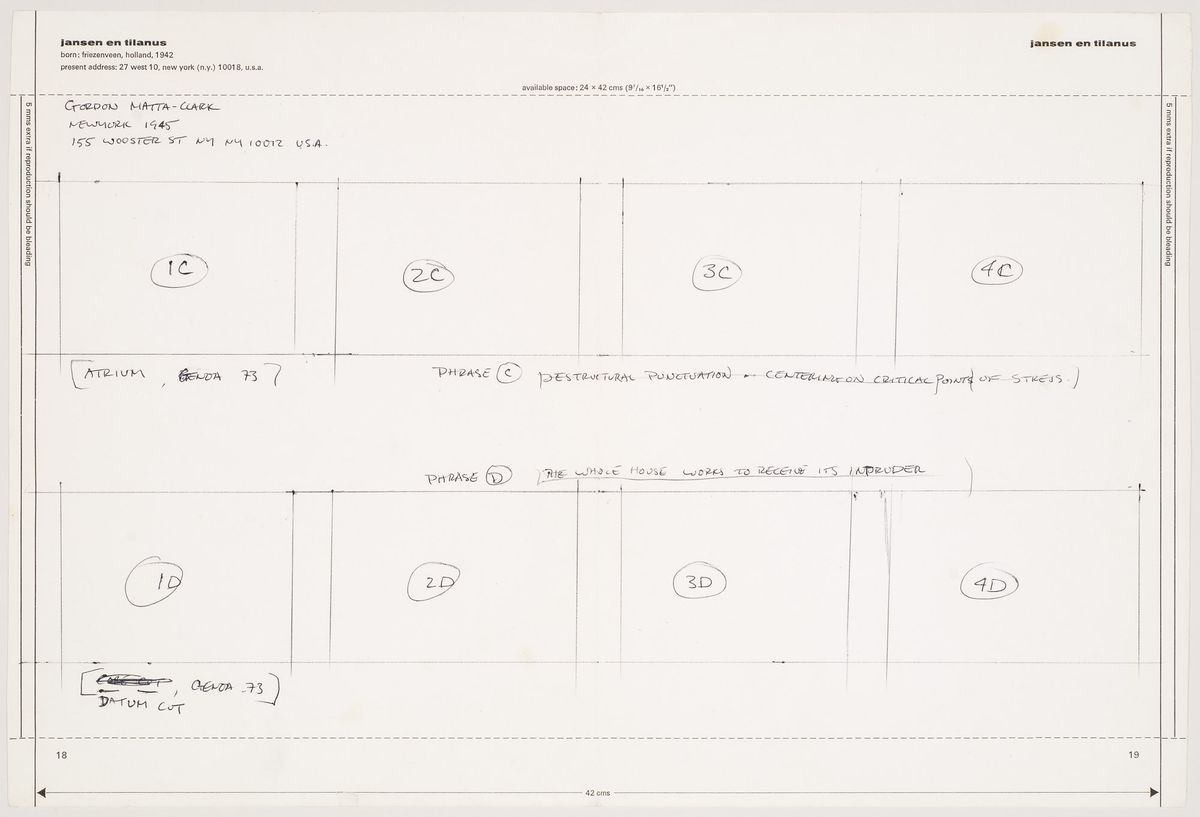Lexical Holes
Frances Richard destructures Gordon Matta-Clark’s Quadrille
In 1973, Gordon Matta-Clark made notes and paste-ups for an artist’s book titled Quadrille. More a booklet or folio than a book proper, the never-completed publication—at least in the version on deposit in the CCA archives—comprises just two pages, presenting four quartets of photographs and four quasi-poetic, caption-like sentences. Each photographic foursome represents an “anarchitectural” cut, two each from two larger projects.
The first of these is Bronx Floors (plural), a series of wall- and floor- removals illegally executed in abandoned apartment buildings in New York, which Matta-Clark completed in 1971 and 1972. Quadrille features a cut called Threshole and one that Matta-Clark calls Bronx Floor (singular); elsewhere, this piece is named Boston Road Floor Hole. The second project is A W-Hole House, Matta-Clark’s first treatment of a building in its entirety. He had completed it earlier in 1973, on a donated site in Genoa, Italy; Quadrille documents its two parts, Rooftop Atrium and Datum Cut. Each suite of black-and-white images includes exterior and interior establishing shots, shots with people and shots without, and shot-reverse-shot pairings wherein a given cut is seen from multiple angles.
It was early in his career, but Matta-Clark already understood that isolated still photographs could not fully capture what he termed his “undoing” of built structures, with their kaleidoscopic viewpoints, teasing of architectural order, and challenge to visitors’ kinaesthetic experience. As the visual syntax of Quadrille suggests, he was involved with film as a means of recording performances—and in 1974, with Splitting, he would begin to film his cuts in progress. These films, however, are not comparative. Quadrille constitutes a rare documentary work in which Matta-Clark placed two cut projects in colloquy. Quadrille is also remarkable for the central place it affords Matta-Clark’s words. Puns are key to his language play—thus Threshole, in which a solid threshold opens like a trapdoor into a hole of its own making; or A W-Hole House, in which wholeness is hyphenated, creating a lexical hole. In Quadrille, these verbal/spatial holes rhyme. “Quadrille” is itself a multi-layer pun. In addition to referencing the formula of four (images) x four (cuts) x four (sentences), a quadrille is a contradance for four couples (Matta-Clark once compared a cut building to a dance partner); quadrille paper, a.k.a. graph paper, is used for diagramming (an in-joke for the architect).
Compressed witticisms like this occur ubiquitously in Matta-Clark titles, but Quadrille’s allusive caption-sentences intensify the material/linguistic interrelation. Matta-Clark’s four phrases expound a mini-narrative of entering and breakage:
A) THE SUSPENSE OF CUTTING RIGID PARTS FREE OF THE WHOLE; B) OPENING UP VIEWS THROUGH THE UNVISIBLE; C) DESTRUCTURAL PUNCTUATION CENTERING ON CRITICAL POINTS OF STRESS; D) THE WHOLE HOUSE WORKS TO RECEIVE ITS INTRUDER.
Cutting, opening, and centering, the house becomes a theater. Suspense is dramatic yet literal, as chunks of lath and plaster or masonry are hoisted on block and tackle. Rigidly geometrical and architectonically free, the resulting views reveal the “unvisible.” Stress and punctuation read now as properties of language, now as facts of engineering. The house works—it performs labor; is functional—to receive “its” intruder, its partner in crime. Together they “destructure” wholeness into something new.
Frances Richard wrote this text as a 2009-2010 CCA Visiting Scholar, and recently published her research undertaken at the CCA in Places Journal and in her book, Gordon Matta-Clark: Physical Poetics.

